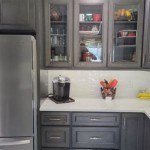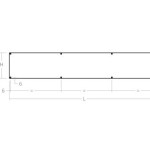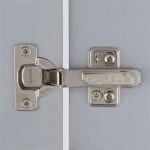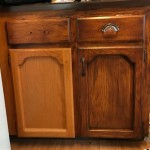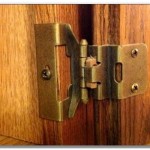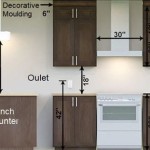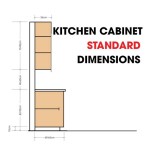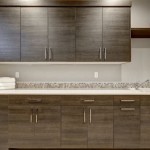Updating Kitchen Cabinets Without Replacing Them: A Comprehensive Guide
Kitchen cabinets often form the visual cornerstone of a kitchen. Their style, condition, and color dramatically influence the overall aesthetic. Replacing cabinets can be a costly and disruptive undertaking. Fortunately, numerous methods exist to update kitchen cabinets without a complete renovation, providing a fresh look and improved functionality at a fraction of the cost. This article will explore several effective strategies for updating existing kitchen cabinets, focusing on both cosmetic enhancements and functional improvements.
Refacing Kitchen Cabinets: A Cost-Effective Transformation
Refacing involves replacing the cabinet doors, drawer fronts, and exposed surfaces with new materials. The existing cabinet boxes remain in place, significantly reducing the labor and material costs associated with a full replacement. This approach is particularly suitable when the existing cabinet boxes are structurally sound and well-positioned within the kitchen layout.
The refacing process typically begins with removing the existing doors and drawer fronts. The exposed surfaces of the cabinet boxes, such as the face frames and side panels, are then covered with a veneer or laminate that matches the new doors and drawer fronts. The new doors and drawer fronts are installed using new hinges and hardware, completing the transformation.
Several materials are available for refacing kitchen cabinets. Wood veneer offers a natural look and can be stained or painted to match the desired aesthetic. Laminate is a durable and cost-effective alternative, available in a wide range of colors and patterns. Rigid thermofoil (RTF) is another popular option, offering a seamless and moisture-resistant finish.
Refacing allows homeowners to significantly alter the appearance of their kitchen cabinets without the demolition and reconstruction involved in a complete replacement. It's a less disruptive and more environmentally friendly option, as it reduces waste by utilizing the existing cabinet boxes. However, refacing may not be suitable if the cabinet boxes are damaged or if the kitchen layout requires significant modifications.
Repainting or Restaining Kitchen Cabinets: A Simple and Effective Solution
Repainting or restaining existing kitchen cabinets is one of the most economical and impactful ways to update their appearance. This approach can transform outdated or worn cabinets into a fresh and modern focal point. The key to a successful repainting or restaining project lies in proper preparation and the selection of high-quality materials.
The preparation process is crucial for achieving a durable and professional-looking finish. It typically involves removing the doors and drawer fronts, cleaning the surfaces thoroughly to remove grease and grime, sanding to create a smooth and receptive surface, and applying a primer to promote adhesion and prevent bleed-through.
When choosing a paint color, consider the overall aesthetic of the kitchen and the amount of natural light available. Light colors can brighten a small or dark kitchen, while darker colors can add drama and sophistication to a larger space. Semi-gloss or gloss finishes are generally recommended for kitchen cabinets, as they are easier to clean and more resistant to moisture.
For cabinets with a natural wood finish, restaining can enhance the existing grain and add depth and richness to the wood. The existing finish must be completely removed before applying the new stain. A wood conditioner can be applied to ensure even stain absorption. Several coats of a clear topcoat are then applied to protect the stained surface.
Repainting or restaining kitchen cabinets is a relatively simple DIY project for experienced homeowners. However, those unfamiliar with painting or staining techniques may prefer to hire a professional for optimal results. Proper preparation, high-quality materials, and careful application are essential for achieving a long-lasting and beautiful finish.
Replacing Cabinet Hardware: A Small Change with a Big Impact
Changing the hardware on existing kitchen cabinets is a surprisingly effective way to update their appearance without undertaking a major renovation. New knobs, pulls, and hinges can dramatically alter the style and feel of the cabinets, providing a fresh and modern look.
When selecting new hardware, consider the overall aesthetic of the kitchen and the style of the cabinets. Modern kitchens often feature sleek, minimalist hardware in brushed nickel or stainless steel. Traditional kitchens may benefit from more ornate hardware in antique brass or oil-rubbed bronze.
The size and shape of the hardware should also be considered. Knobs are generally suitable for smaller cabinets and drawers, while pulls are more comfortable to use on larger doors and drawers. The spacing between the screw holes on the new hardware should match the existing holes to avoid the need for drilling new holes.
In addition to knobs and pulls, replacing the hinges can also contribute to the overall update. Soft-close hinges are a popular choice, as they prevent doors from slamming shut and reduce noise. Decorative hinges can also add a touch of elegance to the cabinets.
Changing the hardware on kitchen cabinets is a relatively inexpensive and easy DIY project. A screwdriver is typically the only tool required. However, it's important to ensure that the new hardware is securely attached and that the screws are not overtightened.
Adding or Modifying Cabinet Storage Solutions: Improving Functionality
While aesthetics are important, updating kitchen cabinets can also involve improving their functionality. Adding or modifying cabinet storage solutions can make the kitchen more organized, efficient, and user-friendly. This can involve installing pull-out shelves, drawer dividers, spice racks, or other organizational accessories.
Pull-out shelves are a valuable addition to base cabinets, as they make it easier to access items stored in the back of the cabinet. They are particularly useful for storing pots, pans, and other bulky items. Pull-out shelves are available in a variety of sizes and materials, and can be easily installed in existing cabinets.
Drawer dividers are essential for keeping drawers organized and preventing items from shifting around. They can be used to separate utensils, silverware, or other items. Adjustable drawer dividers are particularly useful, as they can be customized to fit the specific contents of the drawer.
Spice racks are a must-have for any kitchen that frequently uses spices. They can be installed on the inside of cabinet doors or on the wall. Spice racks keep spices organized and easily accessible, preventing them from getting lost in the back of the cabinet.
Other storage solutions that can improve the functionality of kitchen cabinets include lazy Susans, knife blocks, and utensil holders. The specific storage solutions that are most beneficial will depend on the individual needs and preferences of the homeowner.
Adding Lighting to Kitchen Cabinets: Enhancing Ambiance and Functionality
Adding lighting to kitchen cabinets can dramatically enhance both the ambiance and functionality of the kitchen. Under-cabinet lighting provides task lighting for food preparation, while interior cabinet lighting makes it easier to find items stored inside the cabinets. Accent lighting can also be used to highlight decorative items or architectural features.
Under-cabinet lighting is typically installed on the underside of the upper cabinets, providing direct light onto the countertop. LED strip lights are a popular choice for under-cabinet lighting, as they are energy-efficient, long-lasting, and easy to install. Puck lights are another option, providing concentrated beams of light.
Interior cabinet lighting can be installed inside the cabinets to illuminate the contents. Battery-operated LED lights are a convenient option, as they do not require hardwiring. Motion-activated lights are also a popular choice, turning on automatically when the cabinet door is opened.
Accent lighting can be used to highlight decorative items or architectural features. Rope lights or LED strip lights can be installed along the top of the cabinets to create a soft, ambient glow. Spotlights can be used to highlight artwork or other decorative items.
Adding lighting to kitchen cabinets is a relatively simple and inexpensive way to improve both the aesthetics and functionality of the kitchen. The specific type of lighting that is most appropriate will depend on the individual needs and preferences of the homeowner.

10 Ways To Update Kitchen Cabinets Without Replacing Them
How To Update Your Kitchen Cabinets Without Replacing Them Real Estate U S News

7 Ways To Update Your Kitchen Cabinets Without Replacing Them Central Miami Fl

10 Ways To Update Kitchen Cabinets Without Replacing Them

Easy Ways To Update Kitchen Cabinets Tips By Fantastic Handyman Au

10 Ways To Update Kitchen Cabinets Without Replacing Them

Updating Wood Kitchen Cabinets Love Remodeled

8 Ways To Redo Kitchen Cabinets Without Replacing Them

Updating A 90s Kitchen Without Painting Cabinets
How To Update Kitchen Cabinets Without Replacing Them Homes Gardens
Related Posts

